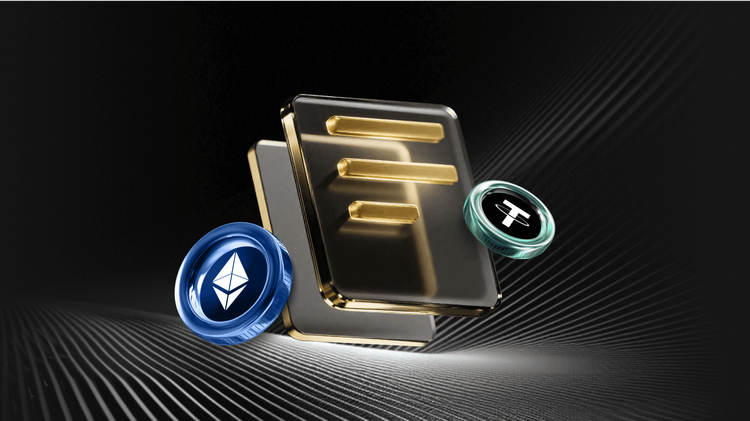Can x402 Break the Cryptocurrency Hype Cycle Curse?
Original Title: Hype, Infra, Adoption: Will x402 Make it?
Original Author: 100y.eth, Four Pillars
Original Translator: Saoirse, Foresight News
Key Points
· In the cryptocurrency industry, most new concepts go through the three stages of "Hype, Infrastructure Development, Adoption." However, most concepts fail to successfully transition from the Hype stage to the Infrastructure stage, ultimately losing market attention.
· x402 is an artificial intelligence (AI) smart agent payment protocol developed by Coinbase, which enables AI smart agents to autonomously execute payments, access paid resources through blockchain, without human intervention.
· Judging from the recent significant surge in the price of x402-related tokens, the protocol has entered the Hype stage. However, unlike other crypto concepts, giants such as Cloudflare, Google Cloud, Anthropic, and others are actively adopting x402, driving rapid progress in the infrastructure development stage.
· Considering the potential of smart agent commerce, x402 is highly likely to enter the Adoption stage. However, the bottleneck lies in the transformation of consumer psychology and trust in the system. According to Accenture data, the biggest obstacle to the widespread application of smart agent commerce is that consumers do not trust AI smart agents.
· Nevertheless, Gartner predicts that by 2030, the transaction volume dominated by AI smart agents will reach $30 trillion, and smart agent commerce will become an inevitable massive market in the future. At that time, the blockchain industry will, after stablecoins, find the second global "Product-Market Fit (PMF)" through x402.
Hype, Infrastructure, and Application Cycle

The "Survival Test" of New Concepts
The cryptocurrency industry is fast-paced, and the rise and fall cycle of new concepts often last only a few months, with the level of attention shifting and dissipating far exceeding that of other industries. In terms of major trends, popular concepts such as NFTs, gaming, metaverse, and modular blockchains have all experienced this pattern; in terms of specific examples, the recent "Futarchy" is a typical case—a brief rise followed by a quick disappearance from the market spotlight.
Due to the constant emergence of new concepts in the cryptocurrency industry, achieving real-world "application landing" for a concept requires overcoming multiple barriers. I summarize this process into three stages:
· Hype Stage: The period when a new concept first gains widespread attention. During this stage, existing projects loosely associated with the concept, newly launched small projects, and even related meme coins often experience price surges of tens to hundreds of percentage points. If the concept successfully transitions to the next stage, the price may remain stable; however, in most cases, the price plunges within weeks or months, and the related projects disappear.
· Infrastructure Stage: When the potential and practicality of a new concept are validated, developers will start building products of actual value based on the concept. Product development takes a long time (ranging from several months to over a year), so vague and weak concepts often face a "miscarriage" in this stage. However, if it is a truly meaningful concept, it will maintain stable attention in this stage, create practical use cases, and the entire industry will gradually grow.
· Application Stage: A concept that reaches this stage is considered a "rare bird"! In the cryptocurrency field, only a few concepts such as Automated Market Makers (AMMs), Central Limit Order Books (CLOBs), lending protocols, staking-related protocols, and stablecoins have reached this stage. Concepts entering the application stage have validated their "Product-Market Fit (PMF)" and will continue to introduce new protocols while attracting a large number of users to actively participate.
Typical Cases in the Cryptocurrency Industry
So, what stages are the recent hot topics on cryptocurrency social platforms currently in?
· Futarchy: As mentioned earlier, Futarchy entered the hype stage due to Vitalik's mention and then faded in popularity; recently, it briefly gained momentum again through Solana's ICO platform but fell out of favor within a few weeks. The core reason is that Futarchy involves a complex governance system, and without a transformation in multi-generational human societal perspectives, achieving large-scale application is challenging.
· Decentralized Energy: Decentralized energy entered the hype stage last year due to several companies receiving top-tier venture capital investments. Recently, Daylight received a $75 million investment from Framework and a16zcrypto, reigniting market interest briefly, but the attention did not sustain. Fundamentally, decentralized energy belongs to a sector that requires physical infrastructure support, and the infrastructure construction phase is bound to be lengthy.
· Robotics Technology (Crypto x Robotics): The development path of robotics technology is similar to the above cases. During the peak of the "crypto + AI" concept hype, the "crypto + robotics" project Openmind raised $20 million from institutions like Pantera, sparking market interest in the robotics technology field. Subsequently, many small to medium-sized projects and meme coins saw price surges, but entering the application stage will still take time. However, given the enormous potential of the "crypto + robotics" concept, many developers, including Openmind, are actively advancing product development.
From these examples, it can be seen that in the crypto industry, it is extremely difficult for a new concept to transition from "birth" to "application implementation."
However, the x402 protocol, which has recently seen a surge in popularity on crypto social platforms, seems poised to quickly break through this "curse" and smoothly enter the application phase. So, what makes x402 so special?
Can the x402 Protocol Succeed?
x402 Protocol Overview
The x402 protocol is an open payment protocol developed by Coinbase, with its core function being to enable AI agents to autonomously complete payments and transactions without human intervention. Through x402, AI agents can use stablecoins to pay for services across multiple blockchain networks, with the advantage of "instant settlement," bypassing complex processes such as account registration, subscription activation, API key configuration, etc.

Source: Coinbase
HTTP 402 is a network status code that signifies "payment required," but it has rarely been practically applied. The x402 protocol leverages this status code: when an AI agent sends an API request, the server responds with an HTTP 402 status code, indicating "payment required to proceed"; upon recognizing this prompt, the AI agent automatically makes the payment with a stablecoin. The specific process is as follows:
1. When an AI agent attempts to access a paid service such as news, an API endpoint, data, etc., the server responds with an "HTTP 402 Payment Required" status code. This response not only includes the "payment required" prompt but also crucial information such as the payment method, amount, recipient's wallet address, etc.
2. Based on the information provided by the server, the AI agent generates a corresponding transaction, adds a digital signature, and sends it back to the server.
3. The server forwards the transaction to a "Facilitator," who validates the payment's validity and processes the transaction on the blockchain.
4. Upon successful payment, the server grants the AI agent access to the paid service.
The value of x402 extends far beyond "providing a payment standard for AI agents." As the payment is made with blockchain stablecoins, it achieves the previously challenging "micro-payment" functionality—AI agents can dynamically call APIs or pay for services based on actual usage, while human users can bypass complex steps like API key management and account registration, directly accessing content through micro-payments.
Entered Hype Phase

Source: a16zcrypto
The x402 Protocol was launched in May 2025 and initially received moderate attention. However, after being mentioned in a16z's report "The State of Cryptocurrency in 2025: A Year Towards Mainstream Cryptocurrency," the protocol's popularity surged. Gartner predicts that by 2030, the smart agent commerce market will reach $30 trillion, while a16z points out that x402 is poised to become the core payment channel for AI smart agents.
A direct signal of x402 entering the hype phase is the sharp increase in the prices of related tokens. For example, the token $VIRTUAL, which experiences a price surge whenever the concept of "AI Smart Agents" heats up, surged by 40% in just two days. Other related tokens also saw significant increases, as shown in the chart below.

At first glance, x402 may seem no different from other "hype-driven" crypto concepts—hollow, superficial, entirely driven by market hype. In fact, many new crypto concepts do follow this path: small projects and meme coin prices surge, only to quickly fade into obscurity.
However, x402 differs fundamentally from these concepts. First, "AI smart agent payments" not only have high relevance in the crypto field but also hold practical value in the entire AI industry, making it a "high-potential" theme. Second, many Web2 companies are actively paying attention to and adopting x402. These factors suggest that x402 may not remain in the hype phase for long but rapidly transition to the infrastructure development phase.
Infrastructure Development Phase Advancing

Currently, the x402 protocol is simultaneously in the "hype phase" and the "infrastructure phase." In fact, long before entering the hype phase, numerous Web2 and Web3 companies began building infrastructure for x402 and integrating it into their services. Therefore, more accurately, x402 started from the "infrastructure phase."
Interestingly, unlike typical crypto concepts, x402 has attracted the attention of many Web2 tech giants, and these companies have begun actively adopting the protocol.
Cloudflare
Cloudflare is an enterprise that provides Internet infrastructure and security solutions. Recently, they have also launched the "Agents SDK" (which helps developers quickly create and deploy AI agents) and "Workers AI" (an AI model inference execution environment) services.
Cloudflare has partnered with Coinbase to launch the "x402 Foundation" and is very active in the x402 ecosystem. Their "Agents SDK" service has integrated the x402 protocol, allowing AI agents to easily transact over the Internet.
Of note, Cloudflare has recently introduced the "NET Dollar," a USD stablecoin designed specifically for AI agents. In the future, AI agents developed using the "Agents SDK" will be able to engage in agent commerce with NET Dollar via the x402 protocol.
Vercel
Vercel is a cloud platform company that primarily helps developers quickly build and deploy web applications. Recently, Vercel has launched services such as the "Vercel AI SDK" and "Vercel MCP" — the former facilitates developers in building and deploying AI agents, while the latter supports accessing projects through the MCP interface. In September 2025, Vercel released the x402-mcp tool, enabling AI agents to automatically make payments via x402 when accessing paid APIs or resources through MCP.
Google Cloud
Google Cloud previously introduced the A2A protocol (AI Agent-to-Agent Communication Collaboration Protocol), which includes an extension module called "AP2 (Agent Payment Protocol)" that enables AI agents to make autonomous payments. The x402 protocol has been integrated into this system as a "payment engine" to help AI agents complete real transactions.
Anthropic
Anthropic is a renowned AI company that has developed the Claude Large Language Model (LLM), which allows users to build AI agent services. Additionally, Anthropic has launched an open-source standard called "MCP," which defines the rules for AI models to access external tools and data. Currently, Claude MCP supports the x402 protocol, meaning that when accessing paid MCP tools, Claude can automatically complete payments.
Visa
As the world's largest credit card payment network, Visa recently announced a collaboration with Cloudflare to develop the "Trusted Agent Protocol." This protocol can verify the trustworthiness of AI requests in smart agent commerce and supports payments through the x402 protocol.
Other Participants
According to a Coinbase announcement, companies such as Circle and AWS are also collaborating on the x402 protocol.
In addition to enterprise and protocol-level support, tools for developers are also emerging, such as x402scan. This browser tool visualizes servers, transaction records, and payment flows using x402, helping users understand clearly "which services are using which coordinators to complete payments on which networks." As the x402 ecosystem continues to expand, more companies and tools are expected to join, further enriching the ecosystem.
Can x402 Enter the Application Stage?
Still a Gap from the Application Stage

Source: x402scan
From phenomena such as the related token's price surge and the adoption by industry giants, x402 has covered both the "speculative stage" and the "infrastructure stage" simultaneously. However, for x402, the key question is: can it smoothly transition to the "application stage"?
According to data from x402scan, as of now, approximately 55,000 buyers have initiated 879,000 transactions with 1,000 sellers. While the transaction volume appears significant, the total transaction amount is only about $923,000—indicating that x402 still has a significant gap to reach the "application stage."
Key Conditions for Entering the Application Stage
What conditions does x402 need to meet to enter the application stage? The most frequently mentioned core factors are "consumer psychology" and "trust systems." Even for someone like me who has been closely following x402, although I can accept AI smart agents providing recommendations in a business scenario, handing over funds entirely to an AI smart agent still raises concerns.
Currently, even the most advanced large language models occasionally output incorrect information or results that do not meet expectations. From a psychological perspective, consumers find it difficult to trust AI smart agents developed based on these models to handle payment transactions. In fact, a survey by Accenture on financial institutions showed that 87% of respondents believe "customers do not trust AI payments" is a core issue; 78% of respondents are concerned that "AI robots may make unauthorized payments or engage in fraud."
The second key factor is the "Current State of Enterprise Infrastructure." Accenture data shows that 85% of financial institutions state that their existing legacy systems are unable to adapt to the needs of "large-scale intelligent agent payments." Among them, the "lack of systems to address fraudulent transactions in intelligent agent payments" is one of the main obstacles preventing the industry from entering the application stage.
In conclusion, for x402 to enter the application stage, enterprises need to build an optimized system that is compatible with intelligent agent commerce and simultaneously cultivate consumer trust in this system. However, whether it is infrastructure development or consumer psychological transformation, both will require a long time—thus, the process of x402 entering the application stage may take longer than expected.
Significance for the Blockchain Industry
Gartner predicts that by 2030, AI intelligent agents will influence a $30 trillion procurement scale. Although the AI intelligent agent payment market is still in its early stages, the x402 protocol has already demonstrated the potential to "become an industry standard"—this is evidenced by tech giants such as Google, Anthropic, and Cloudflare adopting x402 for AI intelligent agent payment services.
Once the activity level of the x402 ecosystem increases, what changes can the crypto market expect? One highly likely prediction is that the recent surge in the value of x402-related tokens may not be sustainable in the long term. Since the rise of "crypto + AI," this track has gradually evolved into a concept with practical significance, and various innovative initiatives have emerged; however, looking back at history, most small project tokens and meme coins that experienced explosive growth in the early hype stage did not perform well in the long run.

Source: x402scan
The clear value that x402 brings to the blockchain industry is that all AI intelligent agent payments will be completed on the blockchain network. Currently, most transactions occur on the Base network, with a few on the Solana network; however, the x402 protocol was designed with "blockchain agnosticism" in mind from the beginning, making it compatible with any blockchain network. This means that as the x402 ecosystem expands, payment activities will no longer be limited to Base and Solana networks but will cover more blockchain networks driven by supply and demand on both sides of transactions.
Intelligent agent commerce is an inevitable, vast market of the future, where all payments will ultimately be completed through the x402 protocol on the blockchain. At that time, the blockchain industry will, after stablecoins, find the second global "Product-Market Fit (PMF)" through x402.
You may also like

December 26th Market Key Intelligence, How Much Did You Miss?

Crypto Christmas Heist: Over $6 Million Lost, Trust Wallet Chrome Extension Wallet Hacked Analysis

Social Engineering in the Crypto Universe: Safeguarding Your Assets in 2025
Key Takeaways Social engineering, a psychological manipulation tactic, has been the leading cause of crypto asset theft in…

Blockchains Quietly Brace for Quantum Threat Amid Bitcoin Debate
Key Takeaways Cryptocurrency networks, especially altcoins, are enhancing security to prepare for potential quantum computing threats. Bitcoin faces…

Vitalik Buterin Discusses Grok’s Impact on X’s Truthfulness
Key Takeaways Grok, an AI chatbot, is praised by Vitalik Buterin for enhancing the truthfulness of the social…

Canton Token Surges Amid DTCC’s Tokenized Treasury Plans
Key Takeaways Canton Coin has surged by approximately 27% due to growing institutional interest and DTCC’s announcement to…

Vitalik Buterin Says Grok Keeps Musk’s X More Honest
Key Takeaways Vitalik Buterin believes Grok is a valuable addition to X by challenging users’ preconceptions. Grok’s unpredictability…

Blockchains Quietly Ready Themselves for the Quantum Threat as Bitcoin Debates Its Timeline
Key Takeaways: Altcoin blockchains, including Ethereum and Solana, are proactively developing defenses against a potential quantum computing threat,…

Canton Coin Rallies as DTCC Introduces Tokenized Treasury Plans
Key Takeaways Canton Coin surged by 27% following DTCC’s announcement of tokenizing US Treasury securities on its Canton…

Canton Token Climbs Amid DTCC’s Tokenized Treasury Plans
Key Takeaways: The Canton Coin experienced a 27% increase following DTCC’s announcement of tokenizing US Treasury securities. The…

Vitalik Buterin Believes Grok Enhances X’s Truth-Friendliness Despite Shortcomings
Key Takeaways Grok, an AI chatbot, is being praised by Vitalik Buterin for making the X platform more…

Blockchains Quietly Brace for Quantum Threats while Bitcoin Engages in Timeline Debate
Key Takeaways: Diverse blockchains are proactively exploring quantum-resistant technologies, unlike Bitcoin, where consensus on quantum threat response is…

Three Titans Bet $17 Million, FIN Makes Strong Move into Cross-Border Payments

Cryptocurrency as a Christmas Gift? Gen Z Is Reconsidering

Stepping into the Stablecoin Craze After Six Years, He Sees the Shape of the Future of Payments

Over $6 Million Stolen: Trust Wallet Source Code Compromised, How Did Official Version Become Hacker Backdoor?

30 Predictions, Filtered for Five 2026 Crypto Consensus

2025 Crypto Rich List: 12 Big Winners, Who Bet on the Money Maker?
December 26th Market Key Intelligence, How Much Did You Miss?
Crypto Christmas Heist: Over $6 Million Lost, Trust Wallet Chrome Extension Wallet Hacked Analysis
Social Engineering in the Crypto Universe: Safeguarding Your Assets in 2025
Key Takeaways Social engineering, a psychological manipulation tactic, has been the leading cause of crypto asset theft in…
Blockchains Quietly Brace for Quantum Threat Amid Bitcoin Debate
Key Takeaways Cryptocurrency networks, especially altcoins, are enhancing security to prepare for potential quantum computing threats. Bitcoin faces…
Vitalik Buterin Discusses Grok’s Impact on X’s Truthfulness
Key Takeaways Grok, an AI chatbot, is praised by Vitalik Buterin for enhancing the truthfulness of the social…
Canton Token Surges Amid DTCC’s Tokenized Treasury Plans
Key Takeaways Canton Coin has surged by approximately 27% due to growing institutional interest and DTCC’s announcement to…
Popular coins
Latest Crypto News
Customer Support:@weikecs
Business Cooperation:@weikecs
Quant Trading & MM:bd@weex.com
VIP Services:support@weex.com
